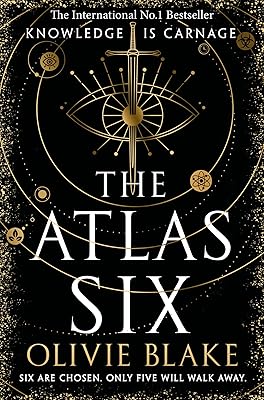May '25 Monthly Review
This post is a continuation of my series of monthly review posts - what I've been doing and all that kind of good stuff. Other entries in the 2025 series:
Okay, so I didn't write anything more in the Halloween Idler game series, which will be forthcoming, I promise! But I did dip my toes back into the Agile space and wrote about Restraining Constraints, prompted by something my boss said in an off-hand comment.
May is my birthday month, so I got to enjoy eating the face of Colin the Caterpillar!
Home
Last month, I pulled up all the artificial turf in the back garden, re-injuring my foot in the process. Running hasn't gone particularly well in May, with the need to tread carefully and avoid flaring the injury back up. I've managed the odd mile here and there, but the effort has not been consistent.
It's been a remarkably warm and sunny May, with next to no rain, so I was worried that the plants would struggle. Thankfully, the grass did seed well and, over the month, has flourished. Initially, the grass sprouted, with the clover coming in later in clumps to fill up the patches.
Here's how it looked before and after:


The wildflower patch has moved on from the forget-me-nots and is now overrun with huge oxeye-daisies. There are several hundred flowers, some reaching five feet in height! Today, the first red poppy has flowered, and over the weekend, some fiddleneck popped up in the back corner, which the bees love!


Work
May is a PI Planning month, so I was up in Edinburgh working with my teams in Technology Operations. We've been focusing heavily on the strategy and roadmap lately, which is nice as we've been more short-term-oriented until recently.
On the AWS side, we're finishing off our roll-out of IAM Identity Center, which removes a vast amount of bespoke provisioning code. We've successfully migrated three of the four 'route to live environments' away from one of our Internet-facing proxy services, with the Production cut-off coming next month. Our cost-saving FinOps exercise continues in earnest. We're seeing costs falling as teams move away from the previous data-centre-designed backup solution towards our AWS Backup solution. We are also removing more of the identified wastage on our bill.
Over on Containers, we've been looking at EKS Auto Mode, but for now, we are deploying Karpenter, which will help us with automated node provisioning and right-sizing. We will be getting more interest in this platform in the future, as Architecture has identified several applications suitable for containerisation.
Media
Men Who Hate Women by Laura Bates

Laura Bates hits the nail on the head with this analysis of the manosphere - that it is a form of terrorism. Even the name bestowed by the press is as insidious as the methodology for how it spreads:
"The very word 'troll', much like 'manosphere', is a hopelessly benign euphemism for a much darker reality."
Through undercover research, Bates details what is essentially a directed effort at building a pipeline for radicalisation, where
"recruitment of young people is the aim, and 'irony' and humour the vehicle."
There's a lot to unpack here, as in a very no-holds-barred approach, Bates covers so-called "Pick-Up Artists", the incel movement, and the bizarre "Men Going Their Own Way" groups. Although online spaces are the breeding ground for such misogyny, the actions of these groups extend into public space and public debate, especially so when politicians regurgitate this messaging into the mainstream.
Hellblazer, Vol 2: The Devil You Know by Jamie Delano

Volume 2 of Hellblazer is a collection of stories that doesn't consistently come together into a cohesive picture. First is the culmination of Constantine's battle with the demon Nergal and an exploration into the Newcastle Incident in his past - this is enjoyable enough and wraps up the stories in Volume 1. Almost as an interlude, the standalone On The Beach is a psychedelic tale of nuclear horror presented as a fever dream. There's another drug-fuelled Arthurian story (which I think is meant to be an ancestor of Constantine's?) before the volume finishes with Constantine tracking a girl who is the embodiment of suffering. The latter story has the best artwork, but I found this collection lacking.
Hellblazer, Vol 3: The Fear Machine by Jamie Delano

Constantine finds himself on the run from the law and associates with a hippie collective with mystic origins. A girl in the group, Mercury, who can sense the power from ley lines, is captured by a defence firm and put to work building the so-called Fear Machine - a psychic amalgamation of terrors extracted from subconsciousness. With the anti-Thatcherite backbeat carrying the story, Delano weaves in paganism, freemasonry and female emancipation in a good story, albeit with a rushed ending.
The Atlas Six by Olivie Blake

The Atlas Six has a lot of concepts that would usually intrigue me - initiation into a magical school (this one is the secretive Alexandrian Library), deception and betrayal. With only space for five initiates, the six must choose to 'eliminate' one of their own. Interestingly, this is more of a character-driven approach than a this-happened-then-this-happened that you'd expect. However, it leant too much on the introspective and philosophical side, meaning that, in large parts, the pace progressed glacially. I'm not sure it interested me enough to continue the series.
Everything Must Go by Dorian Lynskey

Dorian Lynskey, co-host of the Origin Story podcast, provides a well-read cultural review of humanity's fascination with storytelling Apocalypse scenarios. Where this excels is in providing additional context behind each subject, whether that's fear over the development of the atomic bomb, when Mary Shelley and Lord Byron met in Switzerland, or how zombies end up acting as a battleground for differing ideologies. I enjoyed Lynskey's ability to weave connecting threads through each topic.